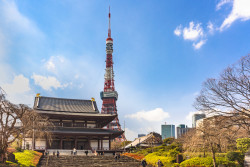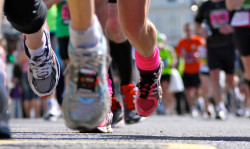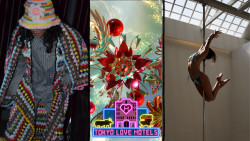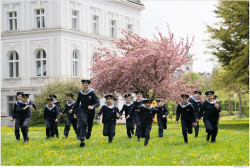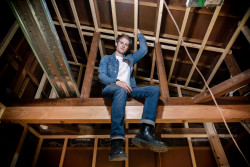
May 6, 2011
Mission Tohoku
With roads and volunteer centers open, it’s getting easier to help
By Metropolis
Originally published on metropolis.co.jp on May 2011

Dan Grunebaum

Patrick de Volpi
Like many in post-quake Japan, my thoughts turned to what more could be done to help people in Tohoku after donating money and goods. The first plan was to join an NGO relief mission, but scheduling did not allow it and the bus was full anyway.
In the meantime, many were organizing their own projects. Japanese-Brazilian Luciano Uchizono of events and marketing firm Jaspex was inspired to help after visiting Ishinomaki with a news crew two days after the quake. “The first days were very painful,” he recalls, “with the danger of aftershocks, tsunamis and radiation, not having a place to sleep, no shower, food or fuel, besides the awful scenery of dead bodies and the fear and hunger.”
Quickly forming an NGO with his partner, president of Armani Exchange Yamaji Terutaka, he began the first of many trips delivering tons of food, water and clothing. Evacuees’ requirements continue to evolve. “Initially the needs were shelter, food, warm clothes, electricity, toilets and showers,” he says. “But what they need most now is financial support, help to clean the city and a proper place to live.”
Tokyo-based Iranian journalist Afshin Valinejad (pictured, right) had worked in Afghanistan, and organized his own mission after reporting on the devastation. “I had a car and the situation was desperate,” he explains. “It was Persian New Year and I was motivated to do something. So I wrote on Facebook ‘Please join me in my tour of love.’ People filled my dining room with all sorts of practical goods, as well as 550 Persian carpets.”
You might wonder what survivors could do with carpets. “At the beginning they had no house,” he says, “but after their basic needs were met my own plan was to make people happy. He notes that unlike Afghans the people of Tohoku were not desperately poor. “I am a Muslim and don’t drink wine, but a friend donated two boxes so I brought it, and the obasan were so happy in the shelter because they have nothing to do. They want to know someone cares about them and that they are not forgotten.”
Even now, some areas lack basic goods. Valinejad was headed back to Iitatemura near Fukushima—a place where many won’t venture—to deliver five tons of water.
I decided to join American friend Michael Anop (pictured, top right) of talent agency Eclipse Productions, who was heading to Ishinomaki in early April.
Foreigners can often be most helpful under the auspices of NGOs, but the work of Uchizono, Valinejad and many others shows that with prior research, imagination and some Japanese language skills, individuals can be useful in an area where so much is still needed. Ishinomaki, Miyagi Prefecture’s second city, counts 5,000 dead and missing. Thousands remain in evacuation shelters.
Anop and I registered with the Ishinomaki Volunteer Center, run out of Senshu University campus, and spent several days shoveling mud and pulling debris out of shattered houses. For survivors living close to the shore, we helped retrieve what was left of their belongings from condemned homes. For residents further inland, we carted away sodden tatamis and flooded refrigerators.
An unsaid task is also to listen to survivors’ stories. At one house, lively, sixtyish Toshiko Hashimoto recounted how she sheltered on the second floor as the tsunami swept through the ground floor and lapped at her stairs. We helped her recover furniture from the second floor and move from an evacuation center into temporary housing.
From what we saw, there will be plenty to clean up for months to come. More than 300km2 of land has been buried under toxic mud, creating 25 million tons of debris.
“We are still very much in the immediate relief stage,” says a spokesperson for Foreign Volunteers Japan, a post-quake online group with more than 1,200 members. “There are still many communities living in very basic conditions. The rebuilding process is beginning; so many volunteers will be required to help with the cleanup as well as construction.”
Peace Boat’s Satoshi Kanazawa says evacuees need housing immediately, as school is starting soon and will require the gyms currently used as shelters. “Prefab housing from the government isn’t ready yet, so the evacuees need a couple months’ shelter,” he states. “The next big push will be temporary housing,” seconds Anop. “Humans cannot live in an evacuation environment for too long without serious mental anguish.”
FVJ notes the difficulty of obtaining accurate information on the specific and often conflicting needs of communities. Those planning to deliver relief goods should determine what is needed where they are headed. Others intending to join municipal volunteer groups should confirm they are accepting individuals, be prepared to work amid sometimes dangerous conditions, and be self-sufficient in food and water
Kohji Takahashi of Ishinomaki Volunteer Center says the main job there is still mud removal and cleaning up houses. “We welcome everybody and want foreigners to feel at ease volunteering,” he says.
Those who go might experience what Anop calls the most rewarding experience of his life. “It’s not only the physical work of volunteering time and energy that helps tsunami victims,” he says, “but also the positive mental support they receive meeting volunteers willing to lend a helping hand and listen to their story.”
Volunteer Centers and Resources
- Japan National Council of Social Welfare Disaster Volunteer Information
www.saigaivc.com - Fukushima-ken Volunteer Center
http://ameblo.jp/pref-f-svc - Iwate Volunteer Center
www.iwate-shakyo.or.jp - Japan Civil Network for Disaster Relief in East Japan
www.jpn-civil.net - Miyagi-ken Volunteer Center
http://msv3151.c-bosai.jp - Miyako Volunteer Center
www.miyashakyo.jp/news/borasen.php - Volunteer Centers in Sendai
www.sendaialtspace.com/Sendai_ALT_Space/Volunteer_Centers.html - Foreign Volunteers Japan
www.foreignvolunteersjapan.org - Volunteer Akita
http://volunteerakita.wordpress.com
NGOs
- Peace Boat
www.pb-kyuen.net - JEN
www.jen-npo.org/en - Second Harvest
www.2hj.org/index.php/eng_home
What to bring
Waterproof work boots, hardhat, rubber gloves, protective eyewear, chemical dust mask, tetanus booster.
